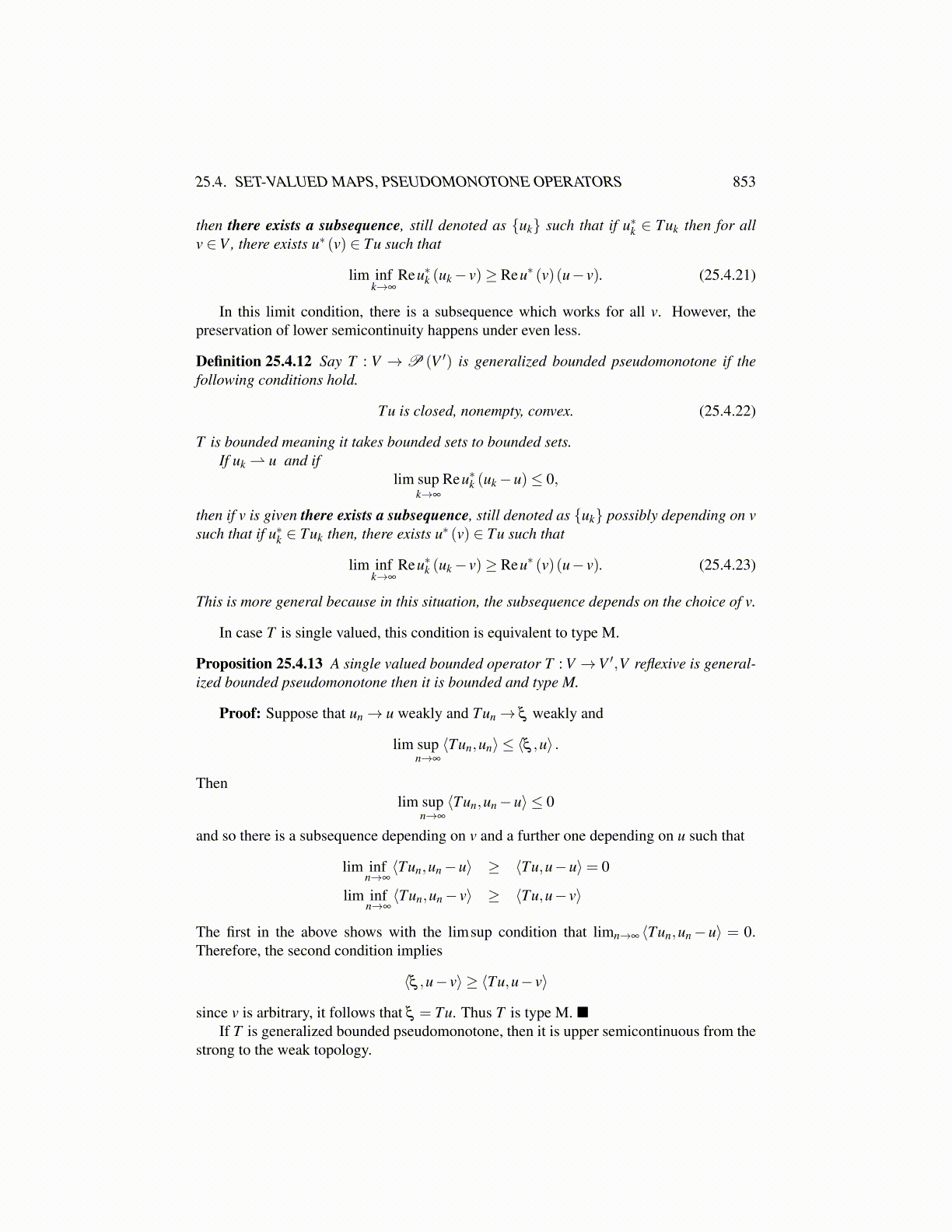
25.4. SET-VALUED MAPS, PSEUDOMONOTONE OPERATORS 853
then there exists a subsequence, still denoted as {uk} such that if u∗k ∈ Tuk then for allv ∈V , there exists u∗ (v) ∈ Tu such that
lim infk→∞
Reu∗k (uk− v)≥ Reu∗ (v)(u− v). (25.4.21)
In this limit condition, there is a subsequence which works for all v. However, thepreservation of lower semicontinuity happens under even less.
Definition 25.4.12 Say T : V →P (V ′) is generalized bounded pseudomonotone if thefollowing conditions hold.
Tu is closed, nonempty, convex. (25.4.22)
T is bounded meaning it takes bounded sets to bounded sets.If uk ⇀ u and if
lim supk→∞
Reu∗k (uk−u)≤ 0,
then if v is given there exists a subsequence, still denoted as {uk} possibly depending on vsuch that if u∗k ∈ Tuk then, there exists u∗ (v) ∈ Tu such that
lim infk→∞
Reu∗k (uk− v)≥ Reu∗ (v)(u− v). (25.4.23)
This is more general because in this situation, the subsequence depends on the choice of v.
In case T is single valued, this condition is equivalent to type M.
Proposition 25.4.13 A single valued bounded operator T : V →V ′,V reflexive is general-ized bounded pseudomonotone then it is bounded and type M.
Proof: Suppose that un→ u weakly and Tun→ ξ weakly and
lim supn→∞
⟨Tun,un⟩ ≤ ⟨ξ ,u⟩ .
Thenlim sup
n→∞
⟨Tun,un−u⟩ ≤ 0
and so there is a subsequence depending on v and a further one depending on u such that
lim infn→∞⟨Tun,un−u⟩ ≥ ⟨Tu,u−u⟩= 0
lim infn→∞⟨Tun,un− v⟩ ≥ ⟨Tu,u− v⟩
The first in the above shows with the limsup condition that limn→∞ ⟨Tun,un−u⟩ = 0.Therefore, the second condition implies
⟨ξ ,u− v⟩ ≥ ⟨Tu,u− v⟩
since v is arbitrary, it follows that ξ = Tu. Thus T is type M.If T is generalized bounded pseudomonotone, then it is upper semicontinuous from the
strong to the weak topology.